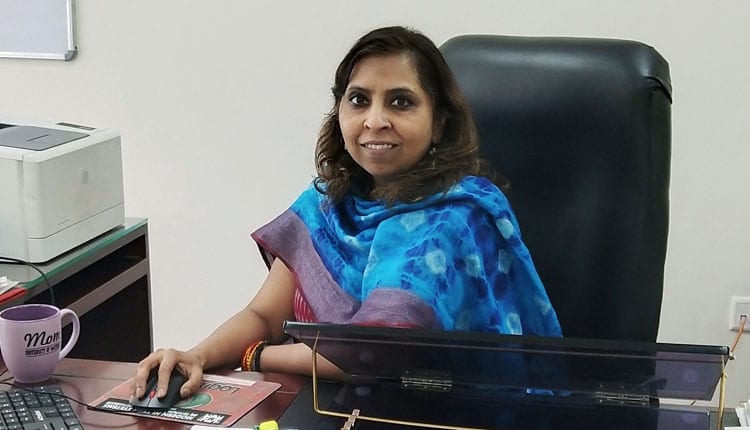Punjab digitising areas of governance for citizens to avail the best of services
Seema Jain, Principal Secretary, Department of Governance Reforms, Government of Punjab, talks about the various technological advancements in the state in recent years. Being an agricultural state, Punjab has been relying on latest technologies to address plaguing issues like burning of crop residue. The state has also rolled out Seva Kendras where citizens can avail a host of services under one roof
How Punjab has been exploiting information technology to revolutionise the way citizen services are being delivered traditionally?
In the past few years we have made a lot of headway and the Department of Governance Reforms has launched various e-governance initiatives successfully. We have made sufficient progress in terms of automation services as well. Over the next few years, the Department of Governance Reforms would completely digitise many areas of the governance so that citizens can avail the best of services. The department has launched many projects to strengthen the Digital Punjab project. Some of the key projects include Seva Kendra, the enterprise architecture and Digital Punjab, which have brought the state on the path to progress. Through these initiatives, I hope other remaining departments would come onboard and the benefits would be passed on to the citizens.
The government is doing a lot on the performance monitoring front which is a subject of importance. We are encouraging many of the departments to design their own key performance indicators and then divide that work within the departments.
Initially, we have launched a system to monitor delivery of 100 odd services in all the districts of Punjab. In the past six months, we have brought down the pendency rate from five per cent to 4.5 per cent and working hard to further bring it down. The speed at which these services are being delivered is very efficient and the department is making efforts to continuously improve it.
How do you see the progress of the key departments of the Punjab Government in the pastfive years?
In terms of applications, there is a substantial increase as nine different departments have rolled out their own applications and they are functioning well. The manual file processing work which used to be done in those departments is now being done digitally. It has brought us to a level where we have a robust and reliable database. This database is going to help us to improve services and take them to the next level.
Many states are depending on the cloud infrastructure to improve services. Could you please brief us about strengthening the cloud infrastructure in Punjab?
We have two models of cloud infrastructure-one is the in-house and the other is the outsourced one. A lot of state government applications are hosted by state data centres and are maintained completely in-house, which is an achievement in itself. Earlier, we used to have system integrators for maintenance purpose. At one tenth of the cost now we are maintaining our own resources. We have presence in all the 22 districts and having trained manpower. The second model of cloud is service providers. Recently, the government has floated a request for proposal (RPF) and through a transparent process, we have empaneled seven agencies which are best in the industry. They handle the requirement of the departments like posting any application or the data on the cloud. Once the plan is approved by the Department of Governance Reforms, applications are either moved to the in-house cloud or given to the empaneled service providers. Importantly, every six months, as part of the condition of the RFP, there is compulsory downward revision of prices to make sure there is no escalation.
Is Punjab ready to adopt next level technologies like IoT, blockchain and AI?
These are very specific technologies and have relevance in specific sectors. Blockchain has a lot of relevance in the public ledger and school education. The government is very optimistic to adopt such ultra modern technologies, but as of now we do not have immediate plans. I would not be able to comment on the plans of the government. Internet of Things may be not so relevant for the government but blockchain and artificial intelligence have a lot of scope in the healthcare sector and we can use AI for application software. As an instance, AI is such a powerful tool for the healthcare sector and can help the government to send alerts to parents of newly born kids for immunisation to protect them against serious diseases. The government is looking forward to invite external agencies for innovation and ideas in several sectors where IT can be used for citizen services.
What are the major challenges in adoption of ultra modern technologies?
Digital transformation is a humongous task. The biggest challenges are organisational and behavioural issues. Sometimes, the organisations are apprehensive about latest technologies. Having said that, I should inform you that such issues are being redressed by the department. We have planned capacity building programs by which we are overcoming those challenges.
Punjab Government has recently turned to technology to sensitise farmers on the ill efftects of burning of crop residue. Punjab Remote Sensing Centre (PRSC) has unveiled three apps— i-Khet Machine, e-PeHaL and e-Prevent to control and monitor the burning of agricultural crop residue. Can you throw some light on this?
The Department of Science and Technology are monitoring the air quality throughout the year and when harvest season happens the air quality is affected because of burning of crop residue. Some new initiatives have been launched by the Agriculture Department and they have also rolled out awareness campaigns and technological interventions are happening.
It is true that many technology initiatives are being taken by the Agriculture Department which helps disseminating information to the farmers.



